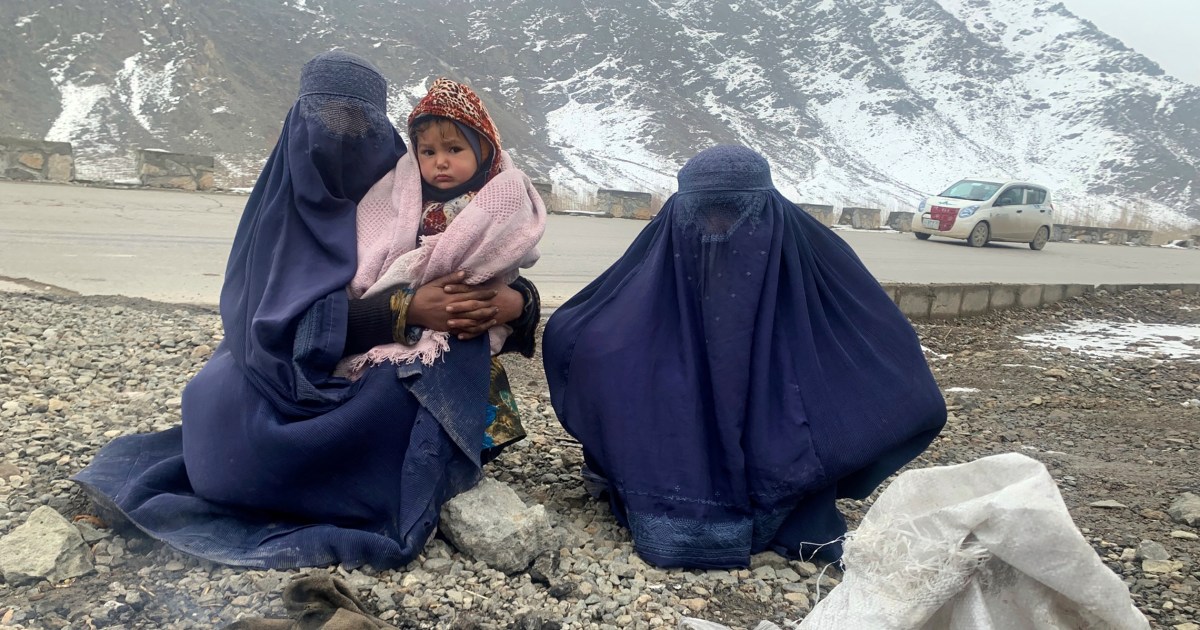In a world where crises compete for attention, Afghanistan, once at the forefront of international aid and media coverage, now sits in the shadows. This year, the global focus has overwhelmingly been on victims of wars in Gaza, Sudan and Ukraine.
The multiple crises that plague Afghanistan have barely registered in international media headlines, and yet they persist. Afghans endure worsening humanitarian, climate and economic crises, characterised by severe poverty, food insecurity and dwindling aid.
In 2024, 23.7 million people – more than half of the population – required humanitarian assistance. Reports show that Afghanistan has the fourth largest number of people facing severe hunger and food shortages. About 12.4 million Afghans do not know where their next meal will come from, placing their country among the top “hunger hotspots” alongside Palestine, Yemen, Haiti and Syria.
About 80 percent of families live on less than $1 per day per person. Nearly four million children, pregnant women and breastfeeding mothers are malnourished. These already dire circumstances are exacerbated by frequent natural disasters from which communities do not have the capacity to recover.
Earthquakes, floods and landslides regularly devastate the country. For instance, in October 2023, several magnitude 6.3 earthquakes struck Herat province, killing at least 2,000 people and injuring thousands more. More than 10,000 homes were destroyed and more than 20,000 severely damaged. At least 275,000 people were affected and were in need of assistance.
Despite some relief efforts in the immediate aftermath of the earthquakes, Herat remains devastated. Thousands of families are facing harsh weather for a second winter without permanent housing or proper access to water, food and sanitation. Destroyed schools have not been rebuilt.
Climate change has also affected Afghanistan. Despite contributing less than 0.1 percent of global greenhouse gas emissions, it ranks among the top 10 countries most vulnerable to climate change. Issues like drought and water scarcity are particularly severe.
In Kabul, water shortages have become so dire that UNICEF warned this year that the city could run out of groundwater by 2030 if immediate action isn’t taken. The lack of water threatens not only urban populations but also rural communities where droughts have devastated local agriculture and livestock.
Afghanistan has also struggled with a weak economy. Unemployment has doubled since last year while the forced return of Afghan nationals from neighbouring Pakistan has cut off vital economic lifelines. Despite increasing hostility towards Afghans in neighbouring countries, emigration continues at a high pace. About eight million people have left the country since 2020, according to the International Organization for Migration.
Many families consider leaving not only because of economic hardship but also because girls and women are denied education and employment.
These multiple crises are starkly visible in Kabul. Having no access to jobs, many women are forced to beg with their children in the streets while boys sell plastic bags, polish shoes and collect rubbish to earn money. Many labourers and wheelbarrow carriers have turned to begging, often waiting outside bakeries for scraps of bread.
Despite the severity of the situation, Afghanistan rarely makes international headlines. This silence is especially heartbreaking when considering the growing number of children who are forced to work even in the cold of winter to earn a meagre living. Their stories of suffering deserve to be heard and acknowledged.
However, Afghanistan needs more than attention. It requires meaningful action. The international community must recognise that the plight of the Afghan people is as urgent as those of the populations of Gaza, Sudan and Ukraine. A poverty and disaster-stricken Afghanistan abandoned by the international community can only be a source of instability in the region.
To break the cycle of hunger and poverty permanently, the international community, NGOs and donor countries must invest in sustainable, long-term solutions. These include building irrigation canals and dams, developing agriculture and livestock, improving infrastructure and creating jobs. Such efforts will help rural people remain in their communities, work their land and secure a better future for their children. Rural development would inevitably also help urban centres prosper.
Afghanistan’s silent suffering and its plight require urgent action. By addressing the root causes of its crises, the international community can restore hope and dignity to its people and work towards a prosperous world where no nation is left behind.
The views expressed in this article are the author’s own and do not necessarily reflect Al Jazeera’s editorial stance.
